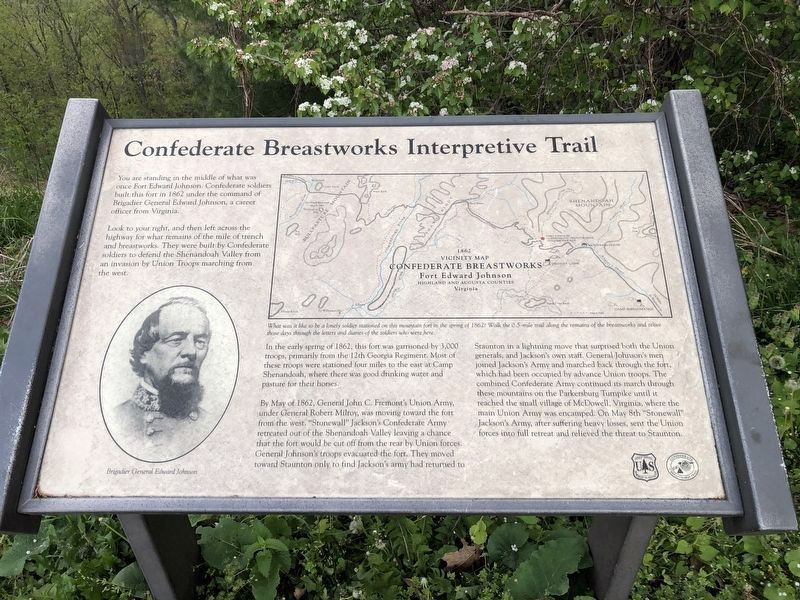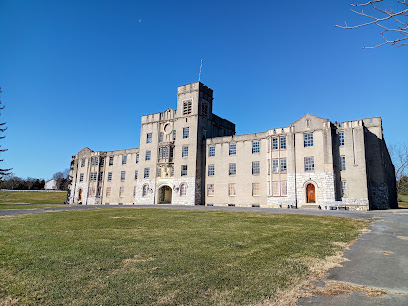Early History

The Civil War
The Shenandoah Valley, once called the Breadbasket of the Confederacy, thrived thanks to fertile fields that ensured soldiers could be fed. Of course, the farms of Augusta County were part of the supply chain.
To get the lay of the land from a Civil War perspective, focus on the Route 250 Corridor from Waynesboro to the Highland County border, a route both sides of the war used.
Visit sites like the Plumb House Museum in Waynesboro where a Civil War Trail marker details the March 2, 1865 battle in which Union General Sheridan overtook Confederate General Early to move east to Petersburg. The Museum hosts the annual Battle of Waynesboro Reenactment in March each year. Then, stop by the Augusta Military Academy Museum to learn more about Virginia’s first secondary-level military academy formed after the Civil War.
In Staunton, Thornrose Cemetery is the final resting place of more than 1,700 Confederate soldiers from five battles. Nearby, the Staunton Train Depot bares a trail marker to explain the struggle between the North and South for railroad access. General Hunter burned the station in 1864, just 10 years after it was built.
In May 1862, Confederate General Thomas Jonathan “Stonewall” Jackson led troops through West Augusta and met Union push-back. A trail of fortifications gives travelers the chance to learn more about the skirmish, the players, and the setting leading up to the battle at McDowell on May 8, 1862. The trail is located at the Confederate Breastworks Interpretive Site on Shenandoah Mountain near the Highland County border.
The Stonewall Brigade Museum takes visitors from the Civil War to the present through the eyes of the 116th Infantry Regiment. The oldest continuous service regiment in the Virginia National Guard and seventh oldest in the United States dates back to 1742. The Museum highlights the 116th’s service in the Civil War, World War II as well as recent deployments to Bosnia, Iraq, Kuwait, and Afghanistan.
National Historic
Districts
Added to the National Register in 1998, Mount Sidney is comprised of 74 contributing buildings and 16 contributing sites across 400 acres, including the 1802 Mt. Sidney African Methodist Episcopal Church. The architectural styles in the village include Federal, Greek Revival, and Late Victorian.
A 1983 addition to the National Register, the Middlebrook Historic District includes a variety of 50 buildings on more than 600 acres. Platted in 1799, Middlebrook is one of the earliest settled villages in Augusta County, making the historic significance immense. A pass through Middlebrook delivers not only settlement history, but post-emancipation through the 19th century as well. Slowed growth in town due to explosive growth outside of town preserved Middlebrook’s original 1885 village plan.
See the complete list of National Register of Historic Places in Augusta County.

Notable People
Grandma Moses (Anna Mary Robertson Moses) is best known for the paintings she created during her 70s in New York, but we love the paintings and stories of her early adult life in Augusta County, as a butter and potato chip-making entrepreneur. See the exterior of her home and read the National Register of Historic Places marker in Mill Place Commerce Park in Verona.
George Caleb Bingham was born in Augusta County in 1811. His family moved to the Missouri Territory in 1819. Bingham went on to be known as “The Missouri Artist,” and one of the first painters to depict the American West. His works can be found in The White House and in art museums nationwide.
Eight United States Congressmen and one United States Senator were born in Augusta County. Of those, one was also the Governor of Georgia, George Mathews (1739-1812). The mother of President Dwight D. Eisenhower, Ida Stover Eisenhower, was born in Augusta County in 1862. Thomas Woodrow Wilson, the 28th President of the United States of America, was born in Staunton in 1856. Visit his childhood home at the Woodrow Wilson Presidential Library & Museum.
The Statler Brothers, a country music group who touched the industry for almost forty years, entered the music scene as Johnny Cash’s backup vocals. Eventually known as the “most awarded act in the history of country music,” Harold, Phil, Jimmy and Don call this area home.
Fletcher Collins Jr., was a Mary Baldwin University drama professor in Staunton for more than three decades. A musician and filmmaker, Dr. Collins founded Augusta County’s Oak Grove Theater in 1953 and eventually earned the title of Cultural Laureate of Virginia. Dr. Collins’ son, Francis Collins, is a physician-geneticist known as a leader of the Human Genome Project.
Of recent notoriety is Joel Salatin of Polyface Farm in Swoope. His name has risen to fame for his “beyond organic” farming techniques. Polyface is one of the farms open for tours on the Fields of Gold Farm Trail.



